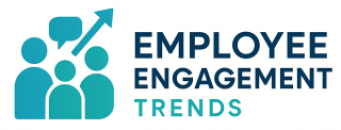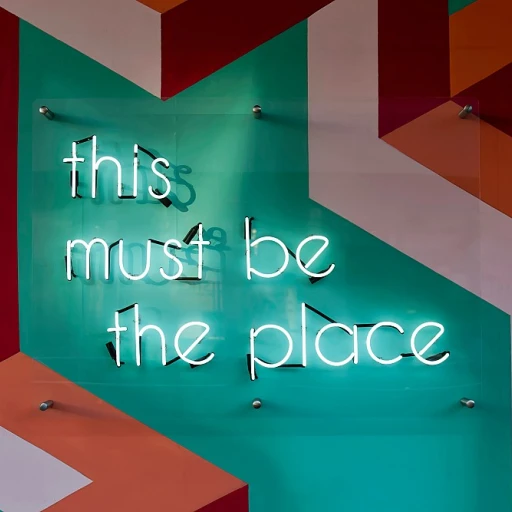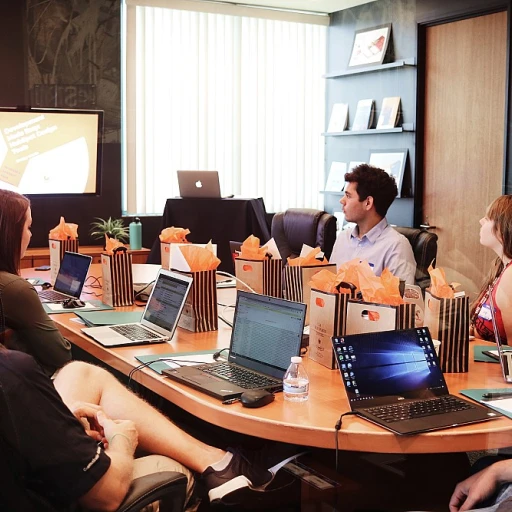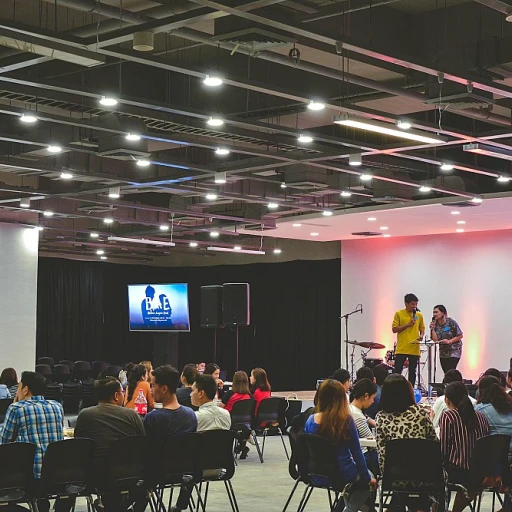
Understanding the Importance of Fun at Work
The Benefits of Fun in the Workplace
In today’s work culture, the traditional view of a workplace as a somber, strictly professional environment is evolving. There is increasing recognition of the role of fun activities in boosting employee engagement and creating a better work experience. When employees have the opportunity to enjoy themselves with their colleagues, it leads to a more harmonious and productive work environment.
Research indicates that introducing elements such as office games, team building activities, and even simple initiatives like a happy hour can significantly enhance the mood in the office, ultimately leading to a more engaged workforce. With employees spending a significant portion of their day at work, embedding these elements creates a holistic and fun workplace culture where people feel valued and motivated.
The presence of fun in the workplace leads to several advantages:
- Boosts employee morale: Having fun makes employees feel relaxed and inclined to collaborate, fostering a positive team atmosphere.
- Encourages creativity: A fun environment removes the boundaries of rigid work structures, allowing team members to think more creatively and out of the box.
- Reduces stress: Fun activities like ping pong or casual office games allow employees to unwind, reducing stress and preventing burnout.
- Enhances retention: A fun work culture can lead to employees enjoying their jobs more, making them less likely to leave the company.
Fostering an atmosphere where fun is integrated into everyday work life goes beyond simply offering recreational activities. It involves creating a strong company culture that prioritizes the well-being and satisfaction of employees. For companies looking for effective ways to increase employee engagement through fun, consider strategies for enhancing team dynamics as an impactful approach.
Identifying Barriers to a Fun Work Environment
Spotting What Holds Back the Fun in Workplace
Creating a fun workplace can do wonders for employee engagement and overall morale, but it's crucial to identify what might be standing in the way of building such an environment. Here are some common barriers that can make it difficult to integrate fun into the daily work experience:- Rigid Company Culture
- When a company's culture is strictly professional, employees may feel that any form of fun work is inappropriate. It creates an environment where team members might hesitate to participate in fun activities, fearing it might be seen as unprofessional.
- Lack of Time
- In a busy work environment, the schedule can be so packed that there's little room left for employees fun. People may feel that they don't have enough time in their day for team building activities or even office games.
- Minimal Leadership Support
- A supportive leadership team is pivotal in promoting a fun office. Leaders who don't see the value in activities geared towards employee engagement may inadvertently create an atmosphere where fun is seen as non-essential.
- Insufficient Resources
- Organizing activities that help with employee engagement requires resources. When resources are limited, it can be challenging for teams to plan and execute engaging employee experience events.
- Geographical Constraints
- For companies with remote teams or employees spread across different locations, coordinating activities and maintaining a fun culture can become especially challenging.
- Misaligned Perceptions on Fun
- What is fun to one team might not appeal to another. Diverse teams require diverse activities, and misconceptions here can lead to disinterest or even divisiveness.
Strategies to Integrate Fun into Daily Work Life
Incorporating Enjoyment into the Everyday
Cultivating a lively work atmosphere requires purposeful integration of fun activities into daily routines. A successful strategy means recognizing the significance of these moments and perceiving them as equally essential as other business priorities.
Begin by personalizing the work environment with specific team-building and fun activities. These can range from quick games or challenges to daily team rituals that boost morale and enhance employee engagement.
Simple Changes, Big Impact
- Office Games: Encourage breaks with desk-friendly games or ping pong tournaments to stimulate minds and mitigate stress.
- Happy Hours: Organize team meetings during the day for light-hearted discussions, creating an open and casual workplace culture.
- Theme Days: Implement regular theme days where employees can dress up according to a specific theme, enhancing the overall employee experience.
A Self-sustaining Culture of Fun
Culture starts with leadership. Engaged leaders who participate in, and encourage, fun office activities drive acceptance and participation from employees. Building connectivity among team members through fun fosters employee engagement and positively impacts the overall company culture.
An example is companies that have managed to integrate such strategies successfully, nurturing both business performance and employee satisfaction. The key is consistency and commitment, creating a truly enjoyable work environment.
Explore more insights on this evolving work culture at the upcoming event.
The Role of Leadership in Promoting a Fun Workplace
The Leadership Influence in Creating an Enjoyable Work Environment
Leadership plays a critical role in sculpting the culture and environment of any workplace. A fun work atmosphere doesn't just happen on its own; it requires intention and effort from those at the helm. Leaders are in a unique position to set the tone for workplace dynamics, which can significantly influence employee experience and engagement.
For leaders aiming to cultivate a fun office, it is imperative to lead by example. If team members observe their leaders participating in fun activities and valuing enjoyment in the workplace, they are more likely to embrace this aspect of culture themselves. Simple gestures like joining in on an office game or participating in a weekly happy hour can send a powerful message about the company's values. This not only helps employees feel more connected to their leaders but also strengthens team bonds across the board.
Open communication is also pivotal. Leaders should consistently seek feedback from their teams about what they find enjoyable or what could enhance the fun aspect of their work life. Employees will appreciate being asked for their input and, in turn, are likely to feel more invested in the company's initiatives. Regular check-ins with team members can unearth new ideas for fun work activities and help address potential barriers before they become larger issues.
Another strategy is incorporating team building into the company culture. By scheduling regular team building activities that are engaging and light-hearted, leaders can enhance team cohesion and employee engagement. Activities might include team-building exercises, themed office days, or fun competitions. These occasions offer employees an opportunity to step away from their daily tasks and build stronger connections with their colleagues.
Leaders should celebrate successes, regardless of size, to keep morale high and remind employees that their efforts do not go unnoticed. Recognition can be a form of celebration that naturally integrates fun into the workplace. Celebrating milestones through a fun office event or an impromptu day of games can help reiterate the company's commitment to employee happiness and job satisfaction.
Finally, it is crucial for leaders to be accessible. When employees feel comfortable approaching their bosses with ideas or concerns, the whole office benefits. A transparent and responsive leadership style fosters trust and inspires employees in their daily work.
Measuring the Impact of Fun on Employee Engagement
Evaluating the Influence of Enjoyment on Staff Involvement
Understanding how a fun environment at work impacts employee engagement is crucial for measuring its effectiveness. When employees feel that their workplace culture supports enjoyable work activities, they are more likely to experience higher job satisfaction and engagement. To begin with, tracking employee feedback is a useful way to measure how fun activities impact daily work life. Surveys and feedback forms can help gauge employees' perceptions of the fun elements within their teams and overall workplace. Questions about favorite office games or past team building activities can provide insight into their preferences. Another approach is to measure productivity and performance metrics. An increase in creativity, innovation, and collaboration among team members after implementing fun office activities like corporate happy hours, themed days, or engaging games can be indicators of enhanced employee engagement. Furthermore, analyzing attendance patterns is beneficial. A fun workplace often experiences higher employee attendance and participation in optional work events. When employees genuinely enjoy the fun culture and feel valued, absenteeism tends to decline. Finally, look at retention rates. Companies that foster a fun work environment might see improvements in staff retention. Employees are more likely to stay at a company when they view the culture as inclusive and enjoyable. In conclusion, while fun at work alone doesn't guarantee the best work environment, it can significantly contribute to a culture where team members are more engaged and find genuine enjoyment in their daily work activities.Case Studies: Companies Excelling in Fun Work Environments
Examples of Companies Leading the Way in Fun Workplaces
When it comes to valuing both employee engagement and a vibrant workplace culture, some companies stand out for their unique approaches. These organizations have seamlessly integrated fun elements into their day-to-day operations, showing a commitment to enhancing the employee experience and team building. Below are a few exemplary cases that highlight how integrating fun can lead to a thriving workplace environment.
Innovative Tech Firms
Many tech companies are renowned for their fun office environments, often incorporating office games like ping pong and other innovative activities to promote team interaction. These fun workplaces encourage creativity and collaboration, thus improving overall job satisfaction. The focus is on creating a setting where employees feel empowered to share ideas and enjoy their work.
Large Retail Corporations
Retail giants have adopted engaging team building and employee fun strategies, such as hosting themed days, happy hour events, and employees fun competitions to motivate their teams. Such initiatives not only break the monotony of the workday but also help in fostering stronger team dynamics and a sense of camaraderie among team members.
Versatile Startups
Startups, due to their flexible structures and dynamic work environments, often excel at making work fun through activities and a great workplace culture. These companies leverage their smaller teams for more personalized fun activities that resonate well within their unique office culture, contributing to substantial employee engagement and satisfaction.
By examining these instances, businesses can gain insights into cultivating a fun work culture that aligns with their specific organizational goals. A great example shows how robust leadership plays a crucial role in transforming a company's day-to-day work life. The impact of such a transformation is clearly seen in enhanced productivity and employee loyalty, proving that a fun work environment is a worthy pursuit for any company.













